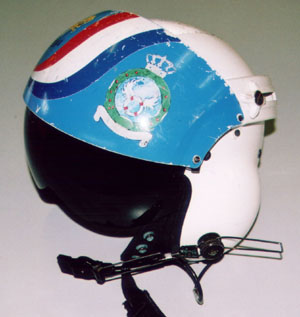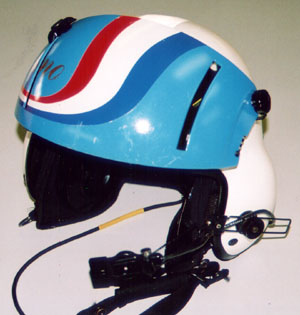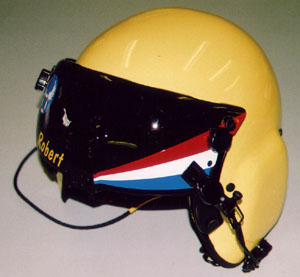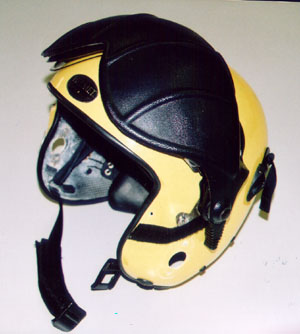|
The primary task of 303 Search And Rescue Squadron at Leeuwarden AFB is to search for and rescue bailed out military pilots and crew members. Situated near the live firing range Vliehors, Air Combat Manoeuvring Instrumentation (ACMI) range on the North Sea and the Temporary Reserved Air spaces (TRA) north of the Wadden islands, the SAR squadron is in the middle of the action. The secondary task of the Search And Rescue Squadron is the transportation of patients from the Islands in the north of The Netherlands in urgent situations.
Last summer, Flightgear Online had the privilege to join the SAR crew on their home base.
Alouette II
NATO regulations require that a rescue helicopter is standing by during actual use of a live firing range. This was the case back then and this is still a requirement nowadays. In the early days, an old ex-Navy helicopter was used for this purpose at Leeuwarden AFB. However, this helicopter was required for other duties so at the end of 1958 the RNLAF ordered six Sud Aviation Alouette II helicopters to perform this task.
On March 25, 1959, the first two Alouette helicopters were transferred from Le Bourget to Ypenburg Air Base. The helicopters were stationed with 298 Squadron temporarily. On April 25, 1959 the SAR/TAR (Search And Rescue / Tactical Air Rescue) unit was declared operational.
Until 1967 the unit remained at Ypenburg but due to the fact that the ranges were all situated in the north, one of the SAR helicopters was stationed on the island Terschelling in 1959.
After receiving two more Alouette II's, the unit became independent from 298 Squadron in 1961 and one year later, the SAR was granted independent status.
In the late 50's early 60's crewmembers were equipped with a white P-series helmet with boom microphone.
An orange/yellow B-5 life preserver was worn over a green/grey cotton flight suit. In the Alouette II, the pilot operated the hoist, and the other crew member was a mechanic/rescuer. Some pictures exist were the P-series helmet seems to be of an olive drab colour. The flight jacket was a Netherlands made example of the US B-15 type, its fur collar could be taken off.
Alouette III
Between September and November 1967, the Alouette II was replaced by the somewhat larger and faster Alouette III. A crew member was added and the hoist was operated by a separate hoist operator.
In 1968 the TAR task was abandoned and 298 Squadron and the SAR unit were transferred to Soesterberg Air Base. The name of the SAR was changed into SAR/Photo flight. A year later the unit was appointed as the official unit to transport members of the Royal family.
Flight gear during the late sixties early seventies consisted of the already mentioned P-series helmet and B-5 life preserver. The green/grey coveralls were exchanged for orange ones for all crewmembers. During these years the B-15 type flight jacket was replaced by a grey goat leather jacket. Of the crewmembers, only the mechanic/rescuer was issued an anti-exposure suit. His helmet was a P-series version without a visor fitted. The boom microphone was replaced by a throat microphone. A belt around his waist contained a "K" type dinghy.
AB412SP
After a major reorganization, the SAR unit was transferred to Leeuwarden Air Base in July 1977, closer to the ranges. The aerial photography unit remained at Soesterberg, and the Royal Flights were abandoned.
In March 1991 it was announced that the Alouette III would be replaced by a lighter type of helicopter. On October 19, 1992, a contract was signed with Agusta Bell for the purchase of three AB412SP helicopters. At the end of 1993 the first of this type was handed over to the Air Force and the first Alouette III was put out of service. On March 18, 1994 the SAR was operational with the AB412SP.
In the AB412 a crew consists of two pilots and a hoist operator. Depending on the situation the fourth crew member can be either a rescuer or medic. With modern avionics, instruments, and navigational aids it is possible to operate under poor weather conditions.
During the late seventies until the arrival of the AB412SP the SAR squadron changed its gear several times:
The P-series helmet was replaced by a HGU-26/P with dual visor assembly. First plain white, the visor housing was painted with the SAR crest and the name of the pilot later on. The Squadron's crest pictured on the helmet consists of a life-buoy on a blue background. The motto Servans in Periculo means Serving in Danger.

The HGU-26/P was replaced by a SPH-4 "Cobra" type (rams horn) dual visor helmet in the early/mid eighties.
Shortly after during the nineties, the Cobra was partially replaced by the SPH-5, but both were used together until recently.

The SPH-4 and SPH-5 are now both replaced by the Gentex HGU-56/P. This time painted yellow instead of the usual white with a gloss black visor cover.

The rescue swimmers are fitted out with the ALPHA 800 Rescuer helmet. More information on this helmet can be found in our article about the Netherlands Navy Lynx helicopter crews.

In the seventies, a grey coverall was issued, made of Nomex and made by Seesing a local manufacturer. During 1985/86 this grey coverall was replaced by a green one, this time made by the Belgian firm Seyntex. Today green coveralls are still in use, although from several different manufacturers.
The leather jacket made room for the Nomex CWU-36 and 45/P style jackets.
The life preserver in use after the B-5 was the LPU-2/P that got replaced by the LPU-10/P. During 1987/88 the LPU was replaced again, this time by the Beaufort Mk.15. During our visit, the SAR Sqn life support worker told Flightgear Online that several Beaufort Mk.45's had been ordered as a replacement for the Mk.15.

We like to thank the men and women of 303 SAR squadron for their time and help in preparing this article.
|